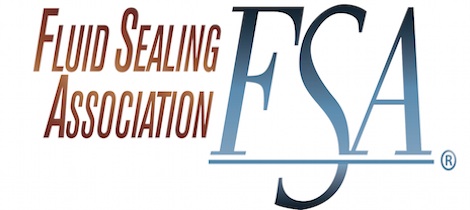What is the current activity with respect to sealing system energy efficiency?
As noted in the last update provided by Henri Azibert, a key recent focus of the FSA Mechanical Seal Division has been to create awareness of the impact on the overall energy efficiency of a pumping systems that can be gained by the proper selection and implementation of the sealing system. To achieve this goal, the FSA in conjunction with our partner division in the European Sealing Association (ESA) have undertaken a two pronged approach.
The first facet of the FSA approach is to create awareness of the impact of sealing systems on energy efficiency. This includes educating the key stakeholders who are responsible for the selection, procurement, installation, and maintenance of sealing systems as to the best practices to minimize the energy footprint of the sealing system. This effort was initiated with the publication of a four part series of Sealing Sense articles in Pumps and Systems magazine that began in August 2010 with an overview of the sealing system energy footprint and a detailed discussion of the portion of the energy footprint associated with energy losses due to the interaction between the mating seal faces. It was followed in September 2010 by an article focused on the impact of thermal inputs to maintain the fluid temperatures for high temperature processes on the sealing system energy footprint. The October 2010 Sealing Sense article focused on the impact of processes to remove diluents introduced as seal flush fluids from the process stream on the sealing system energy footprint. November 2010 offered the final installment of the series which focused on the impact of seal system reliability as it relates to shutting down, repairing and re-commissioning a pump and associated sealing system on the energy footprint.
The concepts from these four articles were expanded upon in a full day training program entitled “Sealing Systems Matter” which was developed by members of the FSA Mechanical Seal Division. The keystone of this training program was the Life Cycle Cost Analysis tool that was developed to quantify not only the life cycle costs of sealing systems but also the energy costs associated these systems. This tool allows sealing system users to compare the costs of alternative sealing systems to understand how each will impact the overall energy footprint. The program also introduced a process for evaluating the existing sealing systems in a industrial application to identify where the greatest potential exists for improvements in energy efficiency. The “Sealing Systems Matter” training program was first presented at the Pump Symposium in September 2011. A one hour long introduction to the program is also included as the first of a five part webinar series on mechanical seals which is dually sponsored by FSA and the Hydraulics Institute.
The second facet of the FSA approach is to impact regulations and standards which seek to govern the efficiency of pumping systems and their corresponding sealing systems. In this effort, the FSA Mechanical Seal Division membership has teamed with the Hydraulic Institute and the European Sealing Association. FSA delegates provided key input on sealing systems to the Hydraulic Institute PERT (Pump Efficiency Regulation Team) which was formed to provide a unified voice for the pump and sealing system industry to the US Department of Energy as they seek to develop legislation to govern pumping system efficiency.
Concurrently with this effort, the Hydraulics Institute has also formed the Pump System Energy Optimization committee which is drafting an informative standard for energy efficiency rotodynamic pump systems to provide users with guidance in the form of tools and metrics for the development of new systems and evaluation of existing systems. FSA members are providing material for the appendix of this standard to address the role that sealing system selection and implementation play in this issue.
In addition, FSA is working jointly with the ESA to provide guidance from the American and European sealing industry into the development of a new ISO Standard 14414 addressing pump system energy assessments. The effort to draft this ISO standard began in earnest this spring.
As the primary industrial organization for the sealing industry in the Americas, FSA is keenly focused on providing a voice for our membership on the crucial issue of energy efficiency as it relates to sealing systems. We recognize the importance of maximizing energy efficiency in the industries in which our products are utilized. The FSA Mechanical Seal Division is committed to ensuring that the best known industry practices and tools are available to the users of our products as well as those responsible for developing legislation that govern their use.
For more information, visit www.fluidsealing.com




